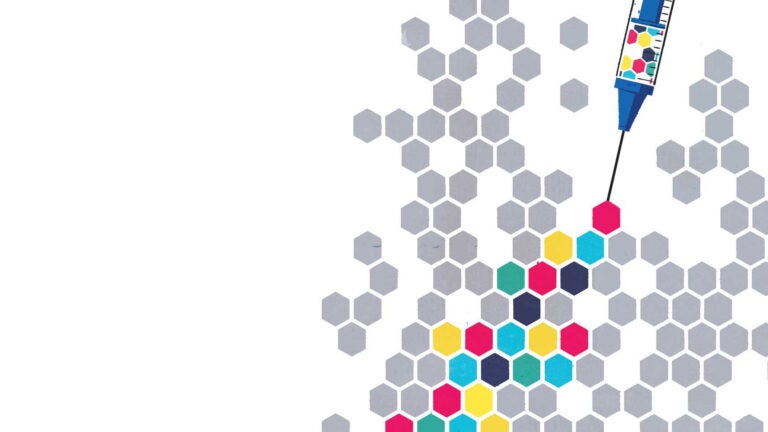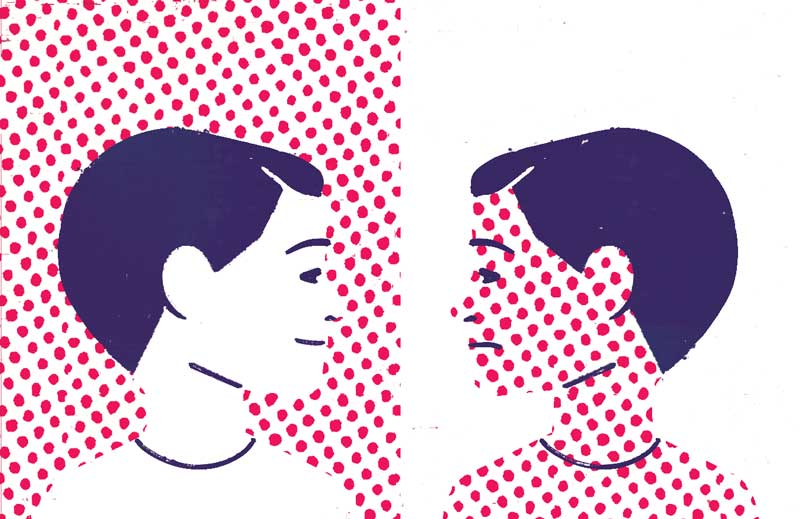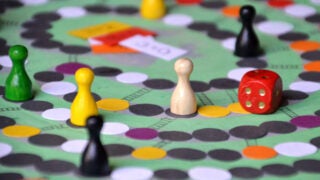
Illustration by Chris Gash
Understanding Vaccines
Everything you need to know about one of the most powerful tools for public health.
Name one scientific advance that has radically transformed public health and protected people from blindness, hearing loss, brain damage, paralysis, miscarriage, birth defects and, yes, even death.
If you answered vaccines, go to the head of the class.
Nearly 220 years after British country doctor Edward Jenner discovered a vaccine for smallpox, immunization now saves about 9 million lives a year worldwide, according to UNICEF. In the past 20 years alone, routine vaccination in the United States has saved 732,000 children and kept 322 million kids from getting sick, the U.S. Centers for Disease Control and Prevention announced in 2014.
Yet these reports come at a time when some members of the public doubt vaccines’ value or believe they’re better off without them. In some ways, vaccines have been too good at their job. Most parents have never encountered once terrifying childhood diseases such as measles, mumps and polio, and most young doctors have never seen a case.
We’ve failed in educating people about the importance and effectiveness of vaccines.
David Goldstein
So some parents, fearful that vaccines may be unsafe, skip or delay routine shots for their children. Other adults don’t realize they need certain vaccinations after childhood, or they object to putting anything in their bodies they think isn’t holistic. Some abstain based on religious views or distrust of drug companies.
“We’ve failed in educating people about the importance and effectiveness of vaccines,” says David A. Goldstein, internist with Keck Medicine of USC and co-director of the USC Gould Pacific Center for Health Policy and Ethics.
Part of the problem can be traced to a 1998 British study that used fake data to link the MMR (measles, mumps, rubella) vaccine to autism. Several studies have since discredited the claim, the original research was withdrawn from the journal that published it, and the author was stripped of his medical license. Still, the myth persists—“probably because it’s like the bogeyman,” says Laura Mosqueda MD ’87, chair of the Department of Family Medicine at the Keck School of Medicine. “It gets to your most primal fear on behalf of your kid.”
For most people, the risk of serious health problems from a vaccine is tiny, says D. Steven Fox, assistant professor of clinical medicine at the Keck School of Medicine and the USC Schaeffer Center for Health Policy and Economics. “Statistically we know that someone who gets the measles or rubella is far more likely to get harmed by the disease,” he says. “Trust the science.”
How Vaccines Are Made
Vaccines work by stimulating the body’s immune system into producing antibodies to fight an injected virus that’s been manipulated so it isn’t harmful.Thanks to these primed antibodies, the body can better fight the real version of the virus during a future infection.
Vaccines are produced in several ways. Some use viruses that are weakened or viruses that are inactivated by a chemical. Others use only a chunk of the virus. Before any vaccine is licensed by the U.S. Food and Drug Administration, it’s tested extensively in labs. Then it undergoes testing in humans in rigorous, three-phase clinical trials before it can be licensed for the public. This can take 10 years or longer.
What would happen if enough people stopped vaccinations? Outbreaks or even epidemics of diseases we thought were conquered decades ago, says Fox.
In 2014, there were 644 cases of measles in the U.S., the most in 20 years.
Measles is a case in point. In 2000, public health officials declared measles eradicated from the United States. Yet by 2014, there were 644 cases, the most in 20 years. This year, more than 150 people from eight states, Mexico and Canada were infected by an outbreak that started in Disneyland in Orange County—something Goldstein calls “a teachable moment.”
One For All, All For One
Turning the measles trend around will take herd immunity, which works much like a protective shield. If enough people are vaccinated, it puts a sort of force field around those who can’t safely be immunized. Herd immunity happens when so few people are susceptible to a virus, it becomes difficult for the virus to spread.
The issue isn’t just about what you want for your kids,it’s about your neighbors and their kids too.
Jehni Robinson
“The issue isn’t just about what you want for your kids,it’s about your neighbors and their kids too,” says Jehni Robinson, associate professor and vice chair for clinical affairs in the Department of Family Medicine at the Keck School of Medicine. “Vaccination is a social responsibility. We have to try keep our communities healthy.”
Due to a less robust immune system, older adults don’t have the same ability as their younger counterparts to mount a response to an infection, which underscores the value of herd immunity, notes Mosqueda. “If I get the flu, I’ll feel miserable, and I’m a pretty healthy 55-year-old,” she says. “But if I’m a pretty healthy 95-year-old and I get the flu, I could die.”
Interested in seeing a physician about vaccinations? Visit Keck Medicine of USC.
Some diseases are so infectious that herd immunity is achieved only if nearly everyone is vaccinated. For measles, which is considered more transmittable than Ebola, 94 percent of people have to be vaccinated for ideal protection. The disease is spread by coughing, sneezing or simply talking, and its droplets hang in the air for two hours.
Children can suffer such complications as brain damage and hearing loss. Less widely known are measles’ severe vision complications, says Jonathan Song, Keck Medicine ophthalmologist and director of cornea services at the USC Eye Institute. These include conjunctivitis, or pink eye, which can lead to corneal infections, ulcerations, perforations and scarring. At stake: permanent vision loss and blindness.
Song is even more worried about rubella, a contagious virus that can cause fetal malformation if a mother contracts the disease in early pregnancy. It can also result in corneal cloudiness, glaucoma and cataracts if you’re infected. Worse, it stays in your system “for many, many years,”

Future Shots
Misunderstanding vaccines is one barrier. Access to health care is another. “The issue’s the same in a sprawling city like LA or a rural area,” Goldstein says.” We need to make sure all people can get the vaccines they need.” Robinson would like to see more vaccines, not just the flu shot, available at community sites like pharmacies, schools, grocery stores and sporting events. In the meantime, innovative techniques are opening up delivery options that make immunization easier—think nasal-spray vaccines—along with experimental DNA vaccines that target a microbe’s genetic material.
While physicians and public health experts try to encourage more vaccine use among the public, their research partners are trying to create new vaccines. It can be a tough road. For Ebola, for example, the many obstacles include infrastructure and the cost of drug development. Ebola requires a Biosafety Level-4 lab—highest contaminant protection—and these facilities are rare. At the same time, pharmaceutical companies are reluctant to invest decades and dollars to produce a drug with little commercial reward. With 10,000 people already lost to Ebola in West Africa, a handful of vaccines are entering human clinical trials—but these studies face challenges, such as mistrust, the ethics of using placebo vaccinations in areas of high Ebola risk and even how to keep heat from ruining vaccines.
Other viruses seem to defy vaccination. For HIV, the disease itself is elusive, making small genetic changes every time it replicates. Embedded in the immune system, HIV disables the very cells that should be attacking it, says Paula Cannon, associate professor of microbiology at the Keck School, who studies how viruses work and how to block them. “It’s a chess game,” she says, “where HIV easily stays one step ahead of our natural immune defenses and certainly any single-shot vaccine we can currently produce.”
Even as this bold search continues, USC experts say it’s time to stop taking vaccines for granted. On April 17, California health officials declared the measles outbreak that began at Disneyland officially over. At the same time, they issued a caution: With vaccination rates still too low, our defenses are down. Measles is just waiting for its chance to make a comeback.



